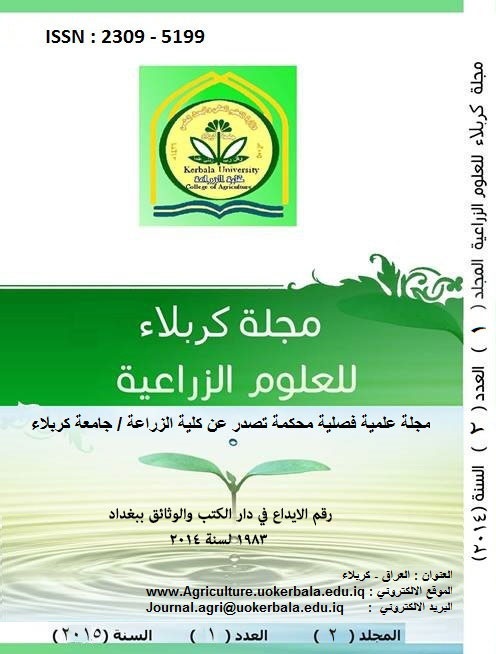Isolate and diagnose fungi producing Mycotoxins accompaniment for apples imported and local and test the efficiency of a number of integrated control programs to control it
DOI:
https://doi.org/10.59658/jkas.v2i1.453Keywords:
ثمار التفاح,المكافحة المتكاملة,الفطريات,Aspergillus niger ,Bacillus polymyxaAbstract
This study was conducted to isolate and diagnose fungi associated with apples imported and domestic, and test the effectiveness of a number of integrated pest management programs in control.
Results showed a solitary existence fungal genera Aspergillus and Penicillium following and Fusarium and Rhizopus, and was Aspergillus niger fungus is most visible in the apples it reached 81.9% increase in imported fruits and 51.1% in local fruits.
And the detected the chemical using a technique plates Alkromatokravaa thin layer (TLC) Thin Layer Chromatgraphy that eleven isolates of the fungus A .niger of between fourteen isolation (88%) producing toxin aflatoxin B1, as shown by the results of chemical analysis that sixteen isolation of the fungus A. niger total of 20 isolates (80%) were able to secrete toxin ochratoxin A.
The results showed solitary existence two isolate of bacteria have the ability to contrast fungus A.niger and given the isolation of bacteria Bp4 Bacillus polymyxa isolated from apples highest percentage inhibition of the fungus as it stood at 88% and the results showed also that the integrated control program which consists of isolation Bp4 material with sodium bicarbonate and treatment heat is the best in terms of the capacity to combat the rot caused by the fungus A.niger, as the percentage of infection of the fungus A.niger 8.33% and a difference of significantly for increase in the control treatment (fruits treatment vaccine A. niger fungus only), amounting to 41.66% while the percentage of infection of injury fruits and applied the same program by 58% at a time when the percentage of infection in the treatment of comparison 91.66.
Downloads
Published
How to Cite
Issue
Section
License
Copyright (c) 2015 Copyright (c) 2024 is the Author's article. Published by the Journal of Kerbala for Agricultural Sciences under a CC BY 4.0 license

This work is licensed under a Creative Commons Attribution 4.0 International License.
Licensing Terms
All articles are published under a Creative Commons License and will be directed to the Creative Commons Attribution 4.0 International License (CC BY 4.0) That permits use, distribution, and reproduction in any medium, provided the original work is properly cited. This license also allows the work to be used for commercial purposes.
Use by both non-commercial and commercial users
This content is licensed under a Creative Commons Attribution 4.0 International (CC BY 4.0) license, permitting use by both non-commercial and commercial users. Individual users may access, download, copy, display, and redistribute the articles to colleagues, as well as adapt, translate, and text- and data-mine the content, subject to the following conditions:
- The author's moral rights, including the right of attribution and the right to protect their work from derogatory treatment, are respected.
- Where content in the article is identified as belonging to a third party, users must ensure that any reuse complies with the copyright policies of the owner of that content.
- If the article content is reused for research or educational purposes, users should maintain a link to the appropriate bibliographic citation, including the DOI and a link to the published version on the journal's website.

